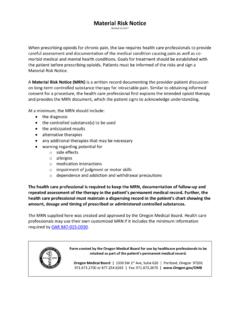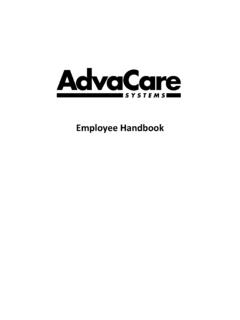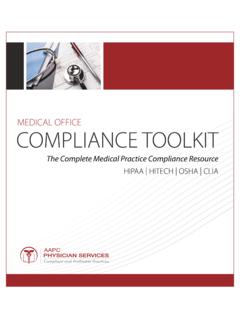Transcription of INFORMATION SECURITY PLAN - oregon.gov
1 INFORMATION SECURITY Plan Guidelines - 1 - revised 9/2/2008 Education and Awareness Oversight and Enforcement Assessment and Reporting Oversight and Enforcement Oversight and Enforcement INFORMATION SECURITY Plan - Implementation Cycle Policy and Requirements INFORMATION SECURITY PLAN GUIDELINES Introduction INFORMATION is an asset that, like other important business assets, is essential to an organization s business and consequently needs to be suitably protected. INFORMATION can exist in many forms. It can be printed or written on paper, stored electronically, transmitted by post or by using electronic means, shown on films, or spoken in conversation. In whatever form the INFORMATION takes, or means by which it is shared or stored, it should always be appropriately protected.
2 INFORMATION SECURITY is the protection of INFORMATION from a wide range of threats in order to ensure business continuity, ensure privacy of INFORMATION , minimize business risk, and maximize return on investments and business opportunities. INFORMATION SECURITY is achieved by implementing a suitable set of controls, including policies, processes, procedures, organizational structures and software and hardware functions. These controls need to be established, implemented, monitored, reviewed and improved, where necessary, to ensure that the specific SECURITY and business objectives of the organization are met. This should be done in conjunction with other business management processes.
3 The statewide INFORMATION SECURITY policy (#107-004-052, effective date 7/30/2007) directs each agency to establish a plan to initiate and control the implementation of INFORMATION SECURITY within the agency and manage risk associated with INFORMATION assets. The plan will include: Processes to: o Identify agency INFORMATION assets; o Determine INFORMATION sensitivity; o Determine the appropriate levels of protection for that INFORMATION ; Applicable state directives and legal regulatory requirements; Identification of roles and responsibilities for INFORMATION SECURITY within the agency; Identification of user SECURITY awareness and training elements; and, INFORMATION SECURITY policies that govern agency INFORMATION SECURITY activities.
4 DAS adopted the ISO/IEC 27002:2005 international standard to guide creation of INFORMATION SECURITY policy in state government. Agencies can use the ISO/IEC 27002 standard to identify best practices that will assist them in meeting the overall intent of INFORMATION SECURITY . A summary of the ISO clauses and controls starts on page 13 of this guide. Implementing an INFORMATION SECURITY plan is not a one-time event. It is an ongoing cycle of identifying policy and requirements, training users, enforcing compliance, and assessing results. This guide is offered as a tool to assist state agencies as they develop their INFORMATION SECURITY plans. It ties together statewide INFORMATION SECURITY policies, tools and resources created to assist in implementing various policies, ISO/IEC 27002 clauses, identification of appropriate roles and responsibilities, and best practices guidelines.
5 Not all the elements identified in this guide will be applicable to all state agencies. An agency should develop a plan that supports its mission and business goals while considering the INFORMATION assets it holds, their value to the organization, and the steps necessary to protect the INFORMATION commensurate with its value. INFORMATION SECURITY Plan Guidelines - 2 - revised 9/2/2008 INFORMATION SECURITY Plan Requirements, Guidelines and Best Practices The following elements are required by the statewide INFORMATION SECURITY policy. Agencies are required to address these elements in their INFORMATION SECURITY plans. The tables below detail policy requirements and offer guidance and best practice statements for each category.
6 These lists are not intended to be all-inclusive. Agencies should apply the items presented and other elements available to them in a way that implements INFORMATION SECURITY and manages risk while best meeting the business needs of the agency. 1. Processes to Identify Agency INFORMATION Assets Required Guidance Best Practice Establish processes to identify agency INFORMATION assets Where INFORMATION is identified, consider legislation, regulations, policy compliance, and/or contractual obligations that affect the management of the INFORMATION . All INFORMATION assets will have identified INFORMATION owners established within the agency s lines of business. Also see other applicable statewide policies: INFORMATION Asset Classification, 107-004-050 ( ) INFORMATION assets come in many forms, including but not limited to: Paper Electronic Digital Images Voice mail Examples of INFORMATION assets include, but are not limited to: Employee-related INFORMATION including employee records, job applications, and records of interview; Procurement records such as RFP specifications, evaluation of proposals, contracts, pricing details, and performance reports.
7 Agency INFORMATION such as policies, strategic plans, correspondence, legal advice, financial and audit reports, system documentation, user manuals, training material, operational and support procedures, business continuity plans, system architecture drawings, and risk analyses; Client INFORMATION including service level agreements, service contracts, and client contact records; and Customer INFORMATION including personal identity INFORMATION collected to issue licenses or certifications, report income, and track education credits. INFORMATION owner questions: What is the INFORMATION ? Where is the INFORMATION used? When is the INFORMATION needed and not needed? Why is the INFORMATION needed?
8 INFORMATION SECURITY Plan Guidelines - 3 - revised 9/2/2008 How is the INFORMATION used? In order to facilitate the classification of INFORMATION assets and allow for a more efficient application of controls, it may be desirable to group like INFORMATION together. It is important to ensure that the grouping of INFORMATION assets for classification is appropriate. A broad grouping may result in applying controls unnecessarily as the asset must be classified at the highest level necessitated by its individual data elements. A narrow grouping allows for more precise targeting of controls; however, as there are more INFORMATION assets to classify, this increases the complexity of the classification and the management of controls.
9 Where practical, leverage other business initiatives such as business continuity/disaster recovery planning, implementation of enterprise policies and initiatives, and implementation of new lines of business, and incorporate INFORMATION asset identification, classification and handling methodologies to protect newly identified INFORMATION assets. See ISO clause 2. Processes to Determine INFORMATION Sensitivity Required Guidance Best Practice Establish processes to determine INFORMATION sensitivity Once INFORMATION assets are identified, conduct an impact assessment on the value of the asset to the organization and any risks associated with its disclosure. Include in the assessment any known legislation, regulations, policy compliance, and contractual obligations affecting the management or use of the INFORMATION .
10 Published classification is low-sensitive INFORMATION . INFORMATION that is not protected from disclosure, that if disclosed will not jeopardize the privacy or SECURITY of agency employees, clients and partners. This includes INFORMATION regularly made available to the public via electronic, verbal or hard copy media. Examples: Press releases Brochures Pamphlets Public access Web pages Materials created for public consumption Limited classification is sensitive INFORMATION that may not be protected from public disclosure but if made easily and readily available, may jeopardize the privacy or SECURITY of agency employees, clients, and/or partners. Each agency shall follow its disclosure policies and procedures before providing this INFORMATION to external parties.















